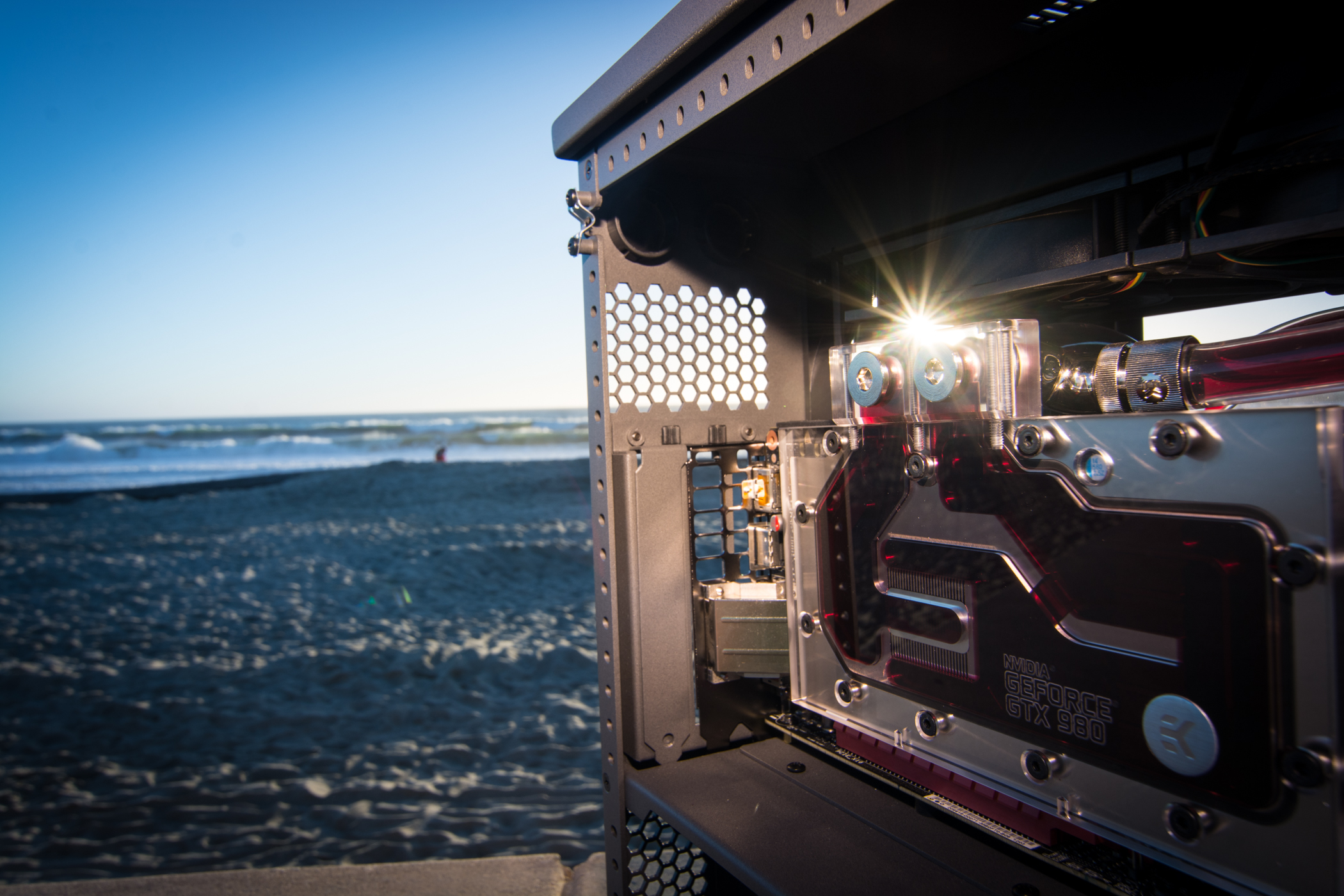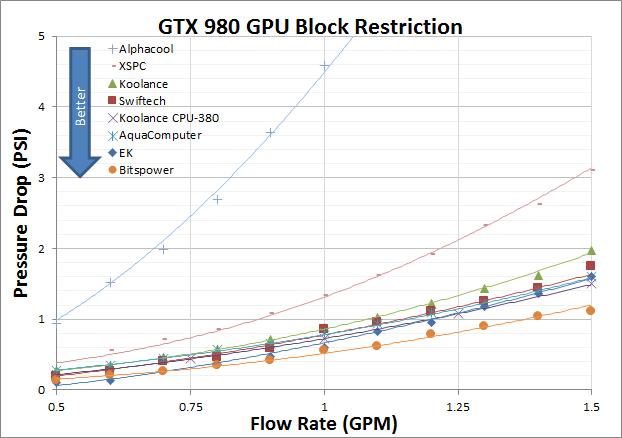Flow Rate Testing
If you don’t know how to read a pressure/flow plot then check out our guide. Testing was done by hooking up the block under test to a water faucet/tap and varying flow throught it. Flow was measured using a 5GPM King Instruments Rotameter, and pressure across the block was measured using a Dwyer differential manometer. A Koolance CPU-380 block is also used here as a reference point:
It can be seen that all but two of the blocks have similarly low restriction. The EK is among these “good blocks” and performs especially well at low flow rates. This is an improvement over the R9-290x which was slightly more restrictive. This is surprising because the jetplate should increase restriction. However EK must have lowered the native restriction of the cooling engine itself whether intrinsically or perhaps simply because the channel lengths are now double and half the length by virture of the center inlet! This is great news then, but does this change in core affect performance?
Onwards to thermal performance!













Nice work as usual Stren. I wonder if you could perhaps test the impact of flow direction on the EK block seeing as GPU’s are often subject to differing flow with multiple blocks and the centre impingement is new for full cover GPU blocks?
[…] of course have been busy also releasing a Titan block: This features the same core design as the 980 block which won the gold in our 980 roundup. As usual there are a ton of different versions. EK also […]
I really wanna ask if this is actually needed because adding this gpu in your loop will cost more or less 200$. Does the watercooling make any significant improvement (to this particular card)?
Comments are closed.